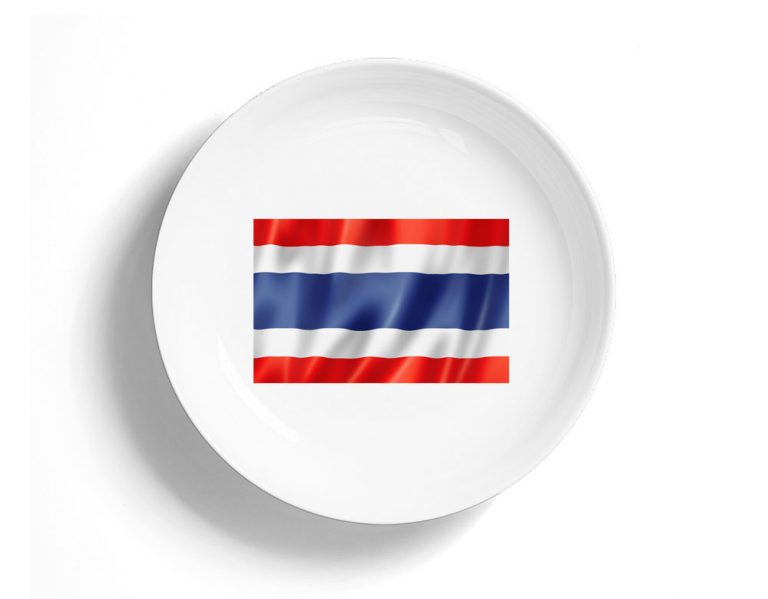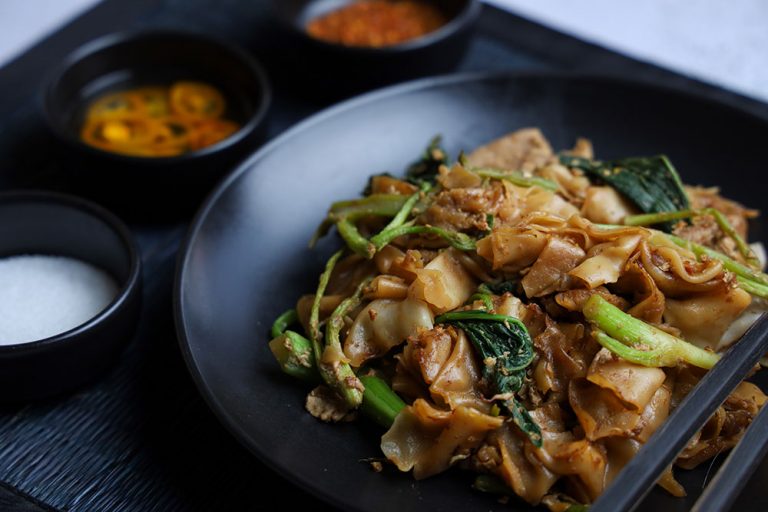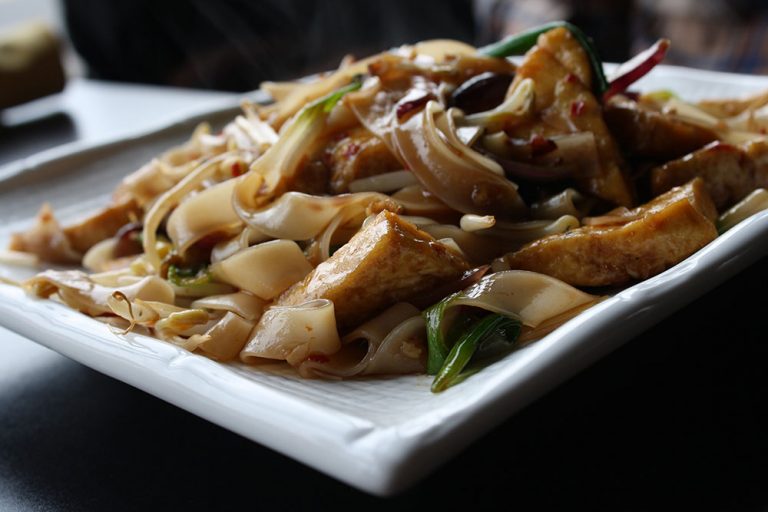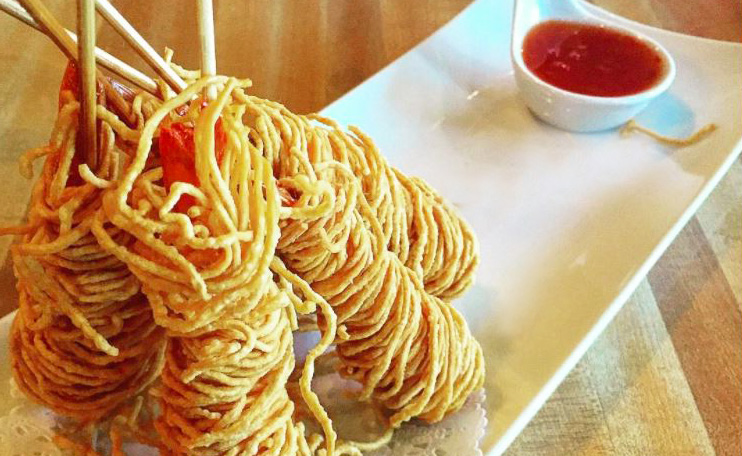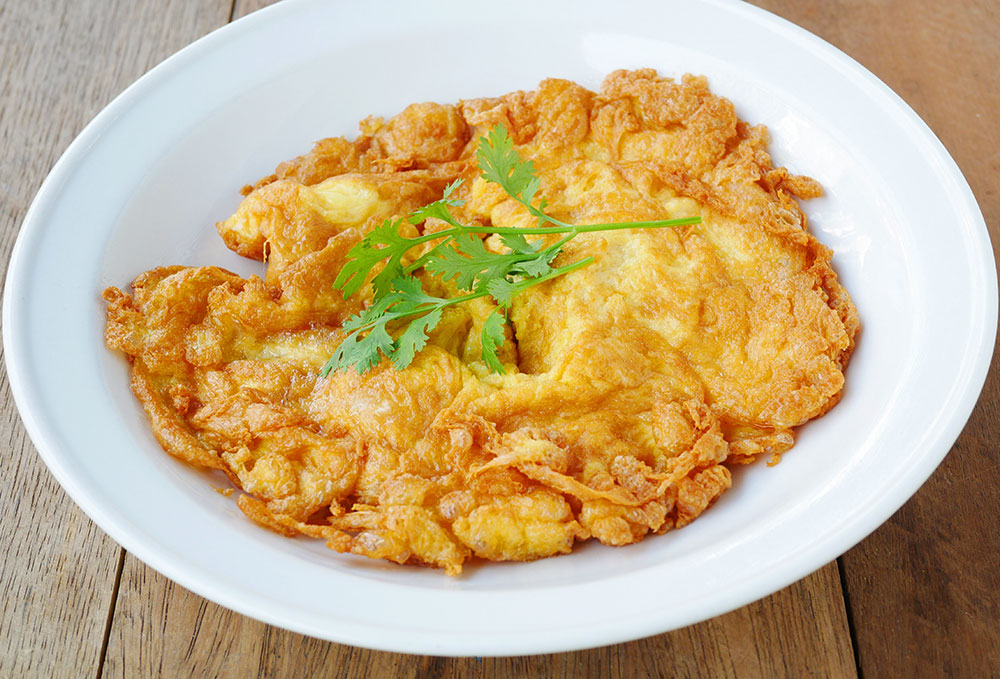
Kai jeow (also spelled as khai jiao, khai jiaw, kai jeaw or kai jiew) is a traditional Thai fried omelet. What makes it unique is its puffed-up texture which is created by frying whisked eggs in hot oil. It is normally mixed with fish sauce and green onions but can include ground pork or beef. It is a popular street food in Thailand since it’s quick and cheap to get.
What does kai jeow taste like?
What sets Thai omelets apart from American and European omelets is their unique umami flavor and combination of textures.
Thai omelets have a rich savory flavor from the fish oil and green onions. Since they are fried, these omelets are a light or golden brown. The edges of the omelets are crispy while the middle parts of the omelets are thick and fluffy (although not quite as fluffy as cloud eggs.) It’s very much a comfort food for Thais.
How do you pronounce it?
Kai, which means egg, is pronounced like the “kay” in “kayak.” It is one syllable that rhymes with bye.
Jeow is also pronounced as one syllable. It rhymes with meow.
What types of Thai omelets are there?
There are many different types of traditional Thai omelets. They are all made by frying the egg in oil, but contain various ingredients and are plated in different ways.
- kai jeow moo sap – Thai omelet with minced pork
- kai yad sai / kai yat sai – Thai stuffed omelet with pork, beef, chicken or vegetables (often folded into a square)
- khao khai chiao – Thai omelet with white rice and chili sauce & cucumbers on the side
- khao khai chiao songkhrueang – khao khai chiao topped with minced pork and vegetable stir-fry
- kai jeow cha om – Thai omelet with acacia leaves known as cha om
- khai chiao khai mot daeng – Thai omelet with red ant eggs
- la tiang – a thin, mesh-like omelet filled with pork, shrimp and peanuts (folded into a square)
Where can I get kai jeow?
Kai jeow is a relatively unknown dish outside of Thailand. That said, there are a few places where you can find it.
Your best bet is to find a Thai restaurant that serves breakfast, which can be hard to come by, depending on your proximity to metropolitan areas. Sometimes this dish is listed in the “specials” or the “sides” part of the menu as “Thai omelet.” Many Thai restaurants that don’t have kai jeow on their menu will happily accommodate your special request for this comfort food…if you ask nicely. 🙂
View this map to find out which eateries are known to serve this popular street food.
How can I make kai jeow?
Kai jeow is one of the easiest Thai dishes that you can make at home. As long as you have some fresh eggs and know how to handle hot oil (by wearing long sleeves, pants, kitchen mitts and some sort of eye protection) due to the inevitable random splashes, you’ll be good to go.
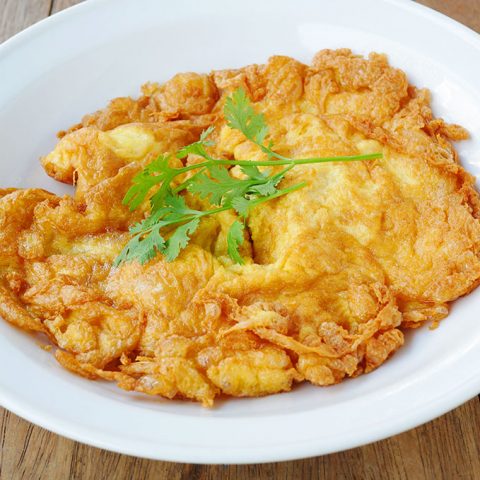
kai jeow (Thai omelet)
puffy fried omelet
Ingredients
- 2 eggs
- 1/2 cup raw minced meat - pork, beef or chicken (optional)
- 1/2 teaspoon soy sauce
- 1/2 teaspoon fish sauce
- 1/4 - 1/2 cup vegetable oil
Instructions
- In a bowl, whip eggs with soy sauce, fish sauce and raw meat.
- In a wok, heat oil over medium heat. When oil is hot (sprinkle water to see if it sizzles), add egg mix.
- Fry one side until golden brown, then flip to fry other side until golden brown.
- Place on paper towel-lined plate for 30 seconds to 1 minute on each side to absorb extra oil.
- Transfer to clean plate. Enjoy!
Did you make this recipe?
Please leave a comment on the blog or share a photo on Instagram








